As South Dakota’s largest state park, Custer encompasses 71,000 acres of trails, wildlife, lakes, and “California-worthy” scenery. It’s one of those state parks like Dead Horse Point in Utah and Petitjean in Arkansas that should be a national park. Better yet, Custer lies only 19 miles south of Mt. Rushmore and borders the northern end of Wind Cave National Park.
The Needles Highway
From Mt. Rushmore, we drove the Needles Highway into Custer State Park. Planned by Governor Peter Norbeck, construction finished on the 14-mile scenic drive in 1922. Deemed impossible to construct, the road twisted and turned. For this reason, we didn’t see any RVs or large trucks. As we climbed in elevation, we viewed needle-like granite spires shooting towards the sky.
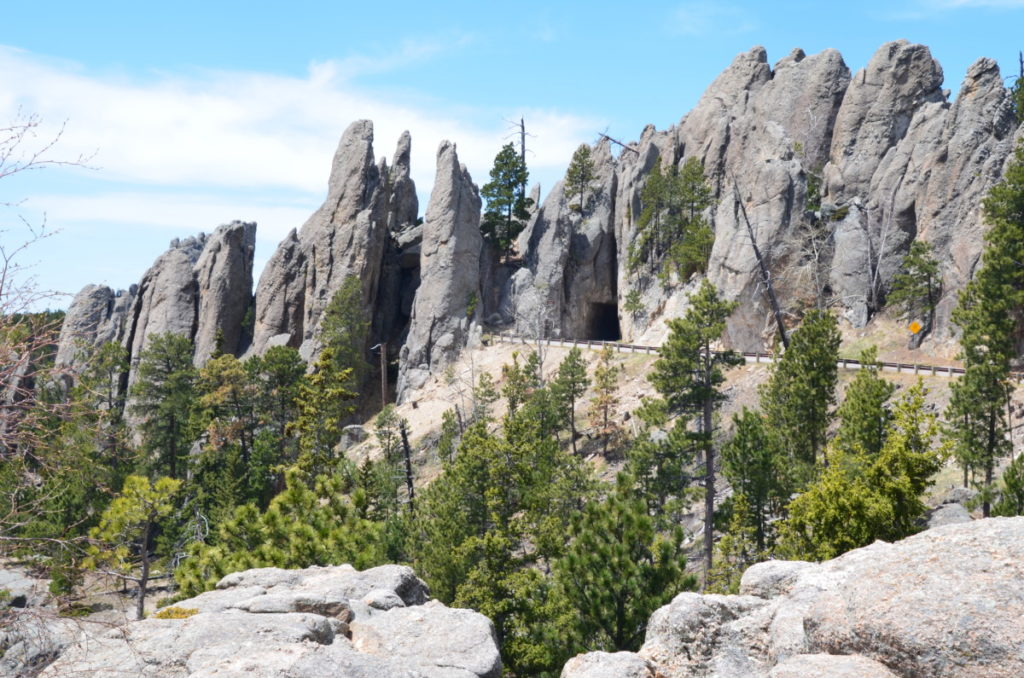
At the Custer State Park entrance, attendants collected $20 from cars and placed a 7-day pass on the inside of windshields. During peak season, visitors can avoid the line and use the automatic pay stations located at the guard house.
Sylvan Lake
Right after the entrance, we stopped at Sylvan Lake and took the 1.1-mile Sylvan Lake Loop. Huge boulders flanked the shoreline reminding me a bit of Mono Lake in California. As we hiked, kayakers paddled in the pristine lake created by a dam over Sunday Gulch.
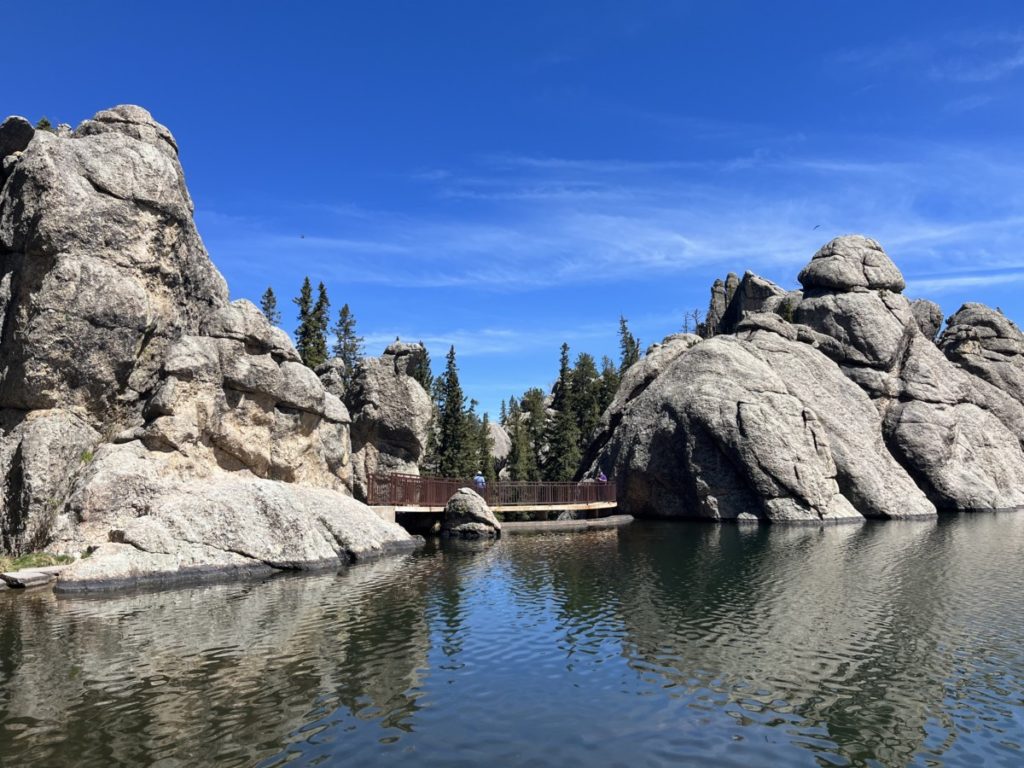
Behind the dam, we climbed several boulders and walked through a narrow tunnel. The area may look familiar to visitors since it was featured in the 2004 movie, “National Treasure: Book of Secrets.”
Sylvan Lake Lodge
Nearby sat the Sylvan Lake Lodge. The most impressive of Custer’s four lodges, a large two-story, wood-paneled lobby greeted us. The dining hall was no less impressive with floor-to-ceiling windows and a brick patio overlooking the lake.
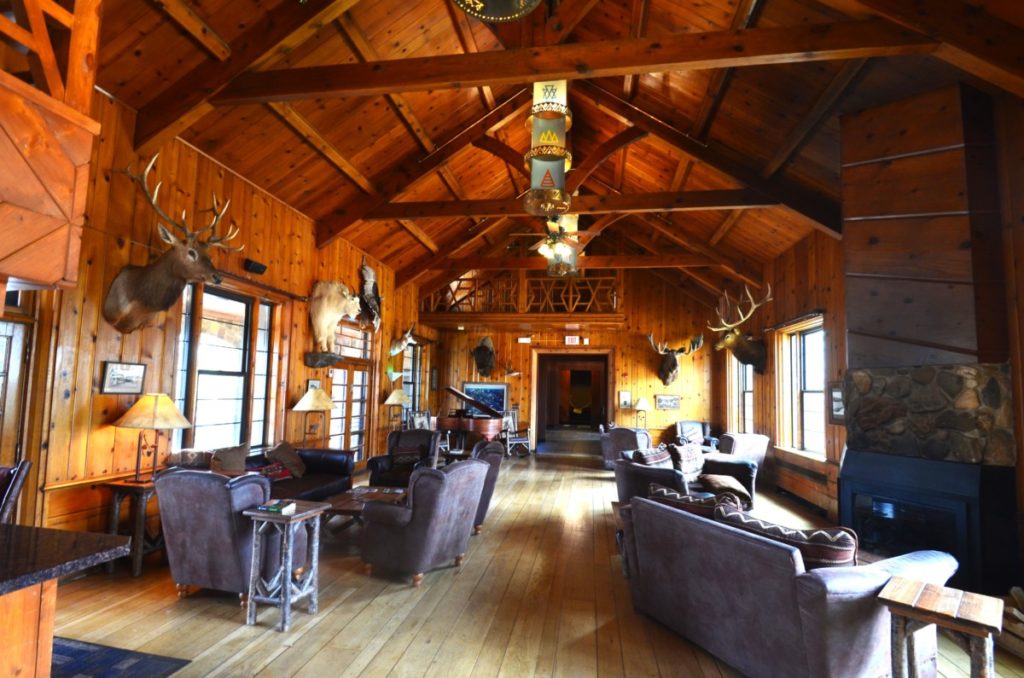
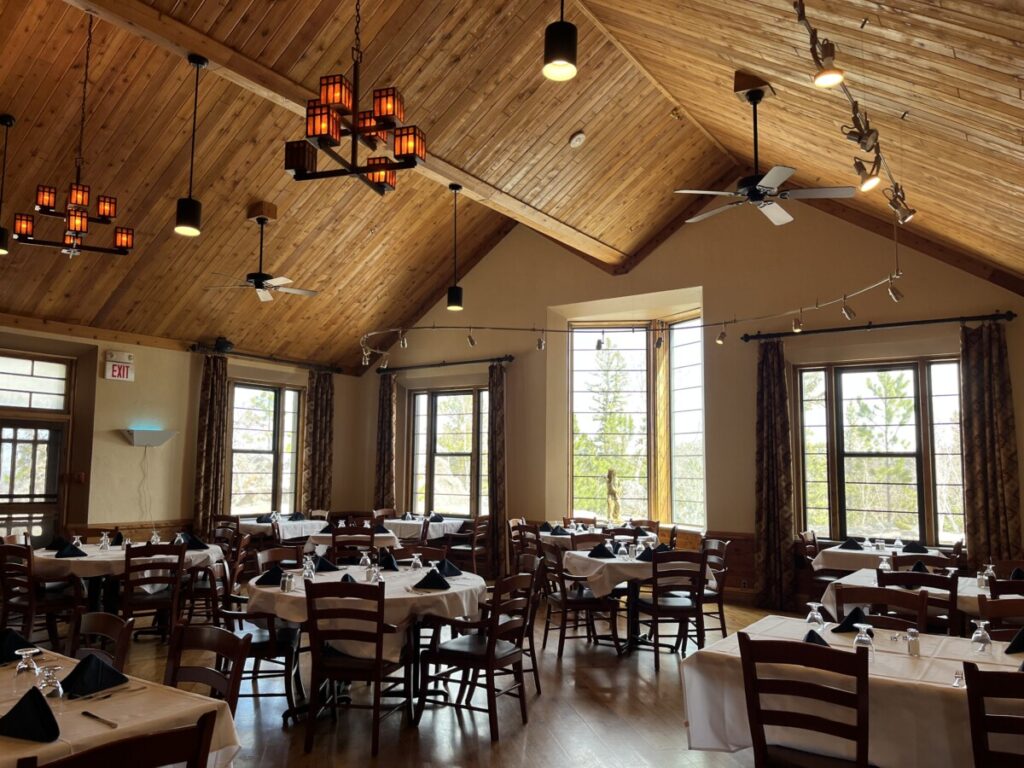
Surprisingly, the Sylvan Lake area wasn’t originally part of Custer State Park. A businessman named Theodore Reder built a Victorian-style hotel on Sylvan Lake in 1893. While the ownership changed hands several times, the resort drew tourists with live music, dances, and an added campground. The state took note and purchased the area for the park in 1921. That investment paid off as Sylvan Lake remains a top destination for Custer’s annual 2 million visitors.
In 1935, a fire completely destroyed the hotel which sat on the shoreline. Custer officials rebuilt the hotel on the ridge above the lake using funds from the WPA and workers from the CCC. Opening in 1938, the hotel featured 29 rooms, 31 log cabins, a gas station, and a general store.
The Needles Eye Tunnel
Back on the Needles Highway, we drove through several tunnels. The most interesting is the Eye of the Needle. The road turns into one lane and vehicles enter the tunnel measuring a little over 8 feet wide and 9 feet high.
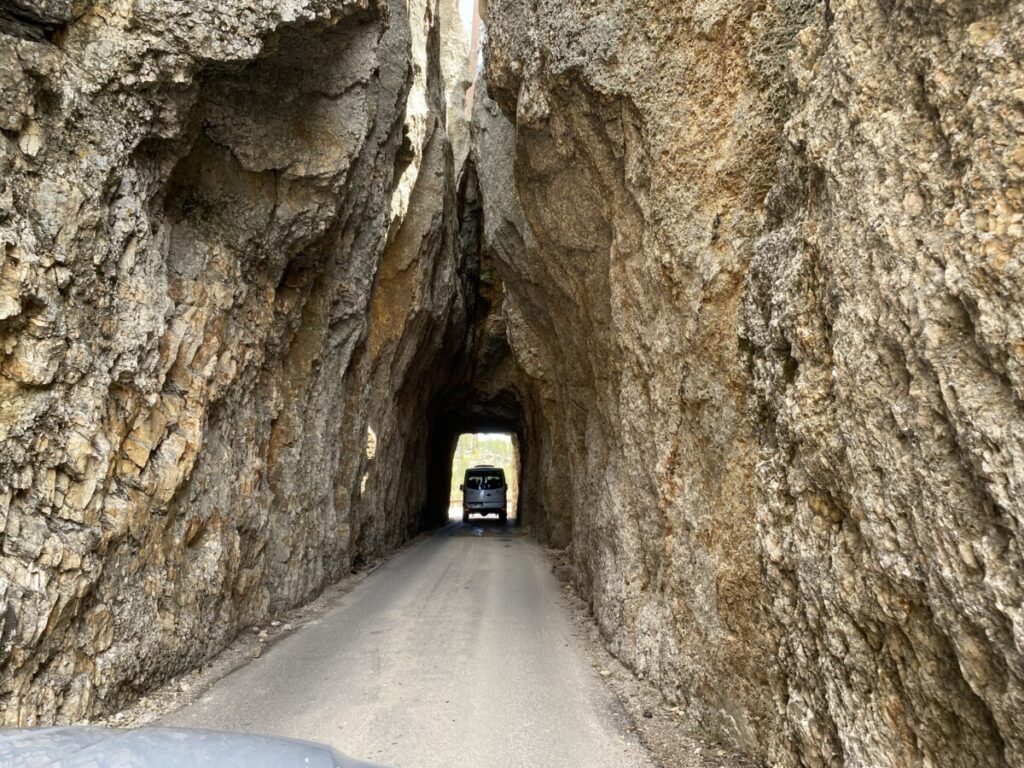
A small parking lot allows people to park and get scenic views of the granite spires. While we didn’t have to wait to drive through the tunnel, travel books said that summer crowds cause delays at this spot.
Although driving through the tunnel feels like threading a piece of thread in a needle, the real needle’s eye formation is nearby. We somehow missed it, but the photo below (taken by my father-in-law in 2014) shows the incredible rock formation.
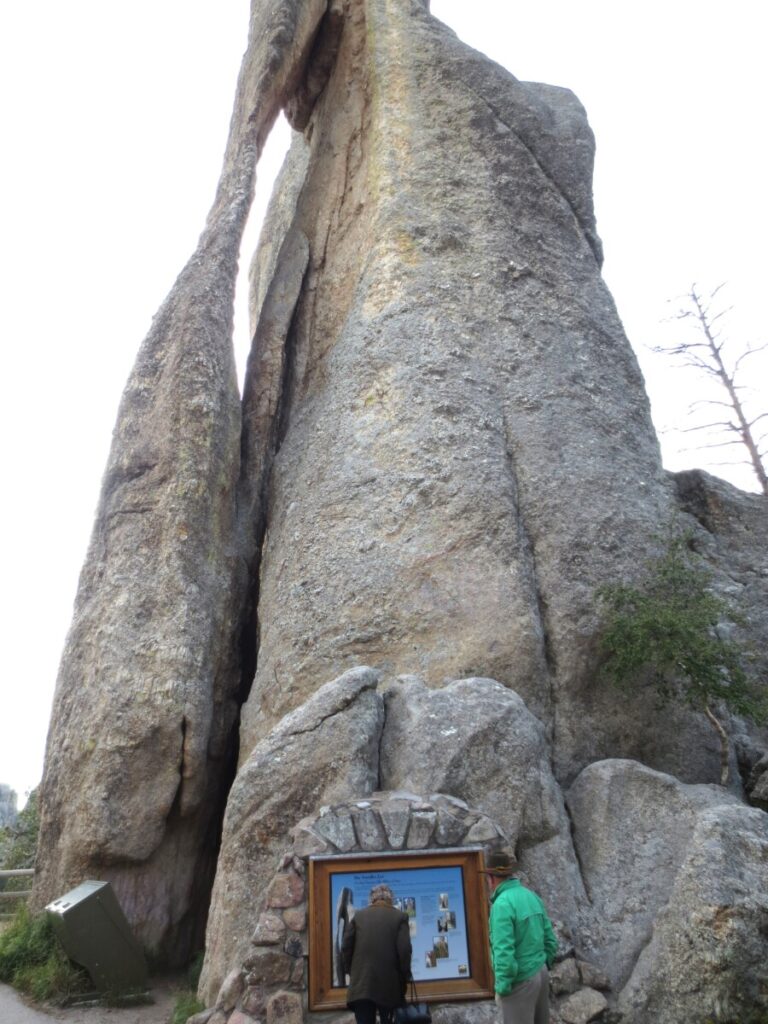
Cathedral Spires Hike at Custer State Park
Soon after the tunnel, the road makes a hairpin turn at a small parking lot for Cathedral Spires. It was at this junction that Wyoming historian Doane Robinson came up with the idea for Mt. Rushmore. He looked at this area of the Needles and felt a carving of Western heroes, such as Sioux leader Red Cloud, would draw tourists to the area. After obtaining approval and funds, newly hired sculptor Gutzon Borglum moved the location to nearby Mt. Rushmore and changed the carvings to four US presidents.
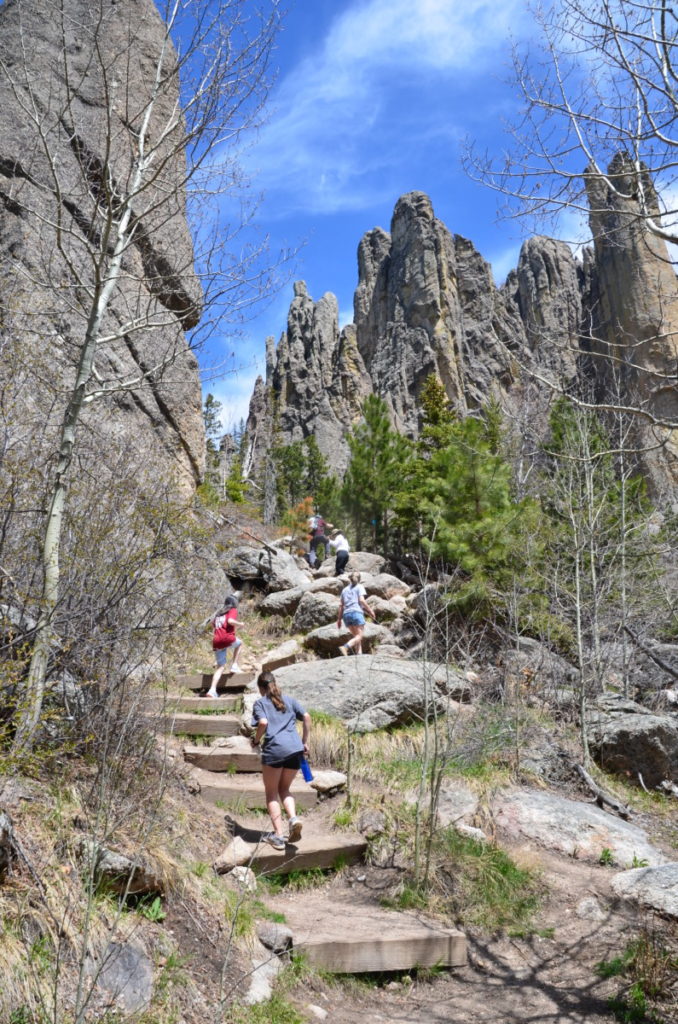
The 1.6-mile out-and-back trail afforded some of the best views of the Needles area. Although rated moderate, the trail seemed fairly level except for several rock-scrambling areas. Before we knew it, the sign announcing the end of the trail loomed ahead.
Legion Lake
Later, when the Needles Highway ended, we headed to the Legion Lake Lodge. Home of 26 cabins and a restaurant on a beautiful lake, we decided this was a great place to get lunch. The food service was quick and ranged from burgers to pizza. While we wanted to hike the one-mile trail around the lake, we decided we didn’t have time as we were headed to our next destination – Wind Cave National Park.
Wildlife Loop
After Wind Cave National Park, we entered back into Custer and headed east on the southern section of the Wildlife Loop, also known as 16A. True to its name, we saw tons of wildlife on the recently repaved road.
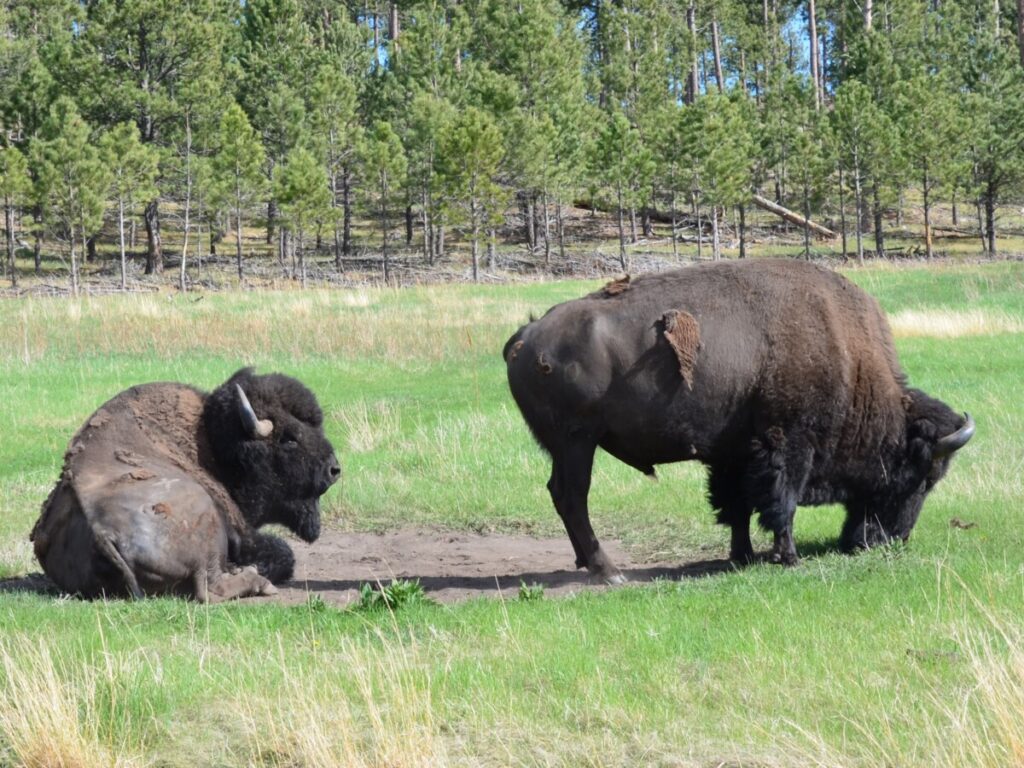
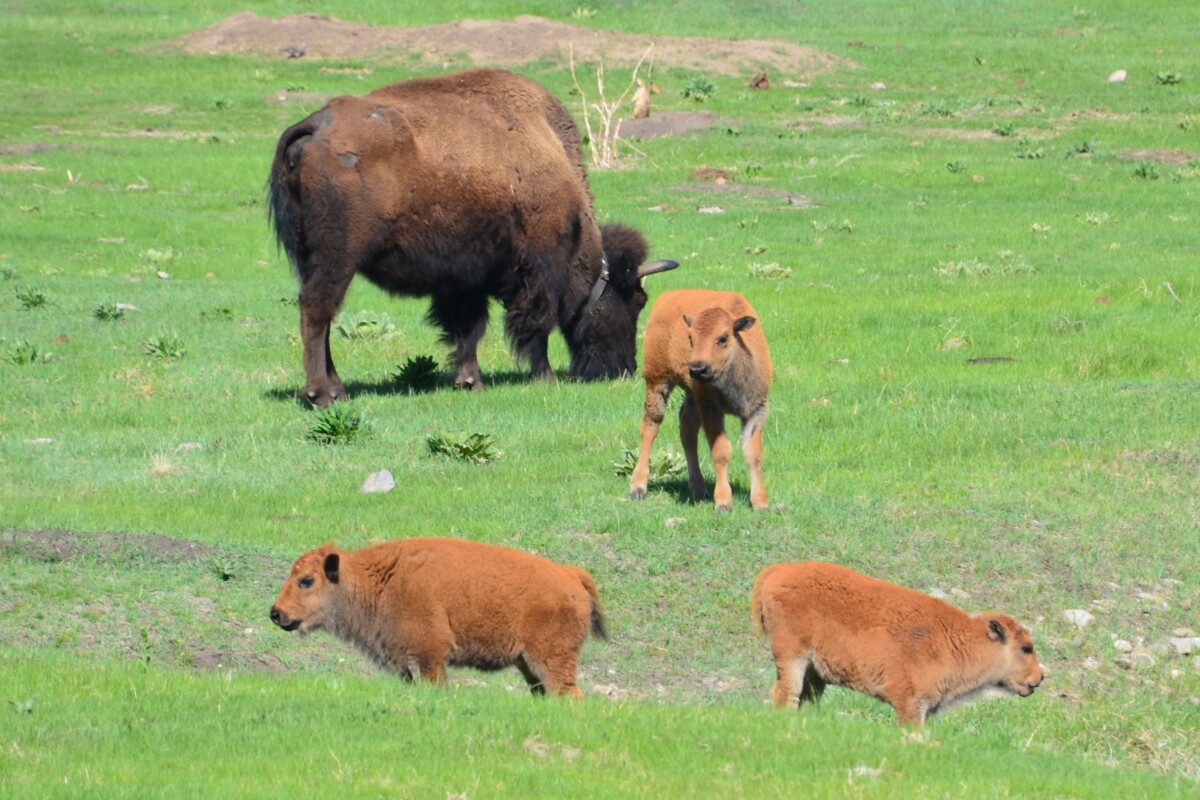
Bison dotted the landscape everywhere! In 1914, 36 bison arrived at the park in an effort to conserve the dying breed. The bison flourished and park officials had to manage the herd beginning in the 1920s. Starting in1965, the park hosts an annual round-up and auction at the end of September, drawing 19,000 visitors.
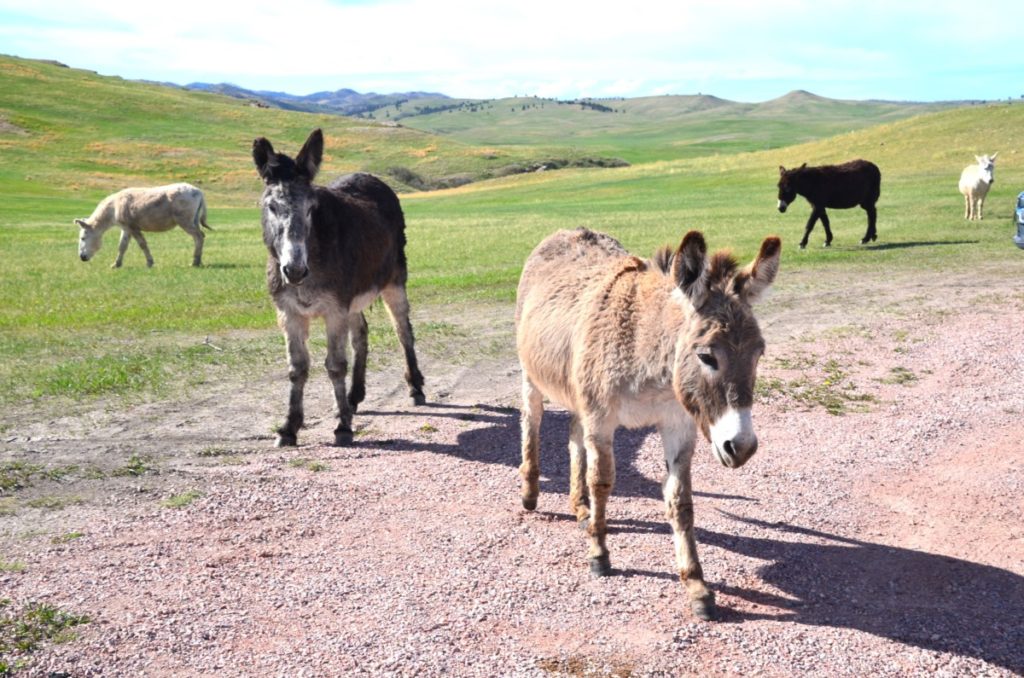
One of our favorite stops included a visit to the begging burros. This group of friendly donkeys interacted with visitors and showed no signs of fear.
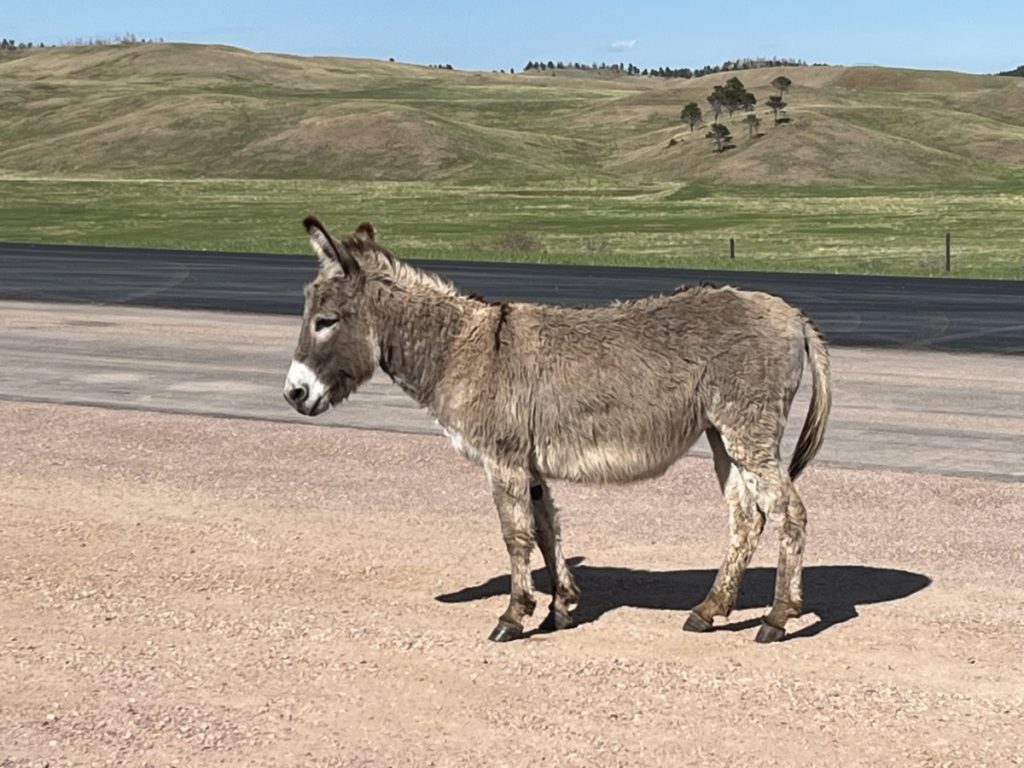

One kept putting his head in the car window before we had a chance to roll it up. Another used our side car mirror to scratch a spot on the back of his head! When we tried to leave, the burros blocked the way and we had to wait a few minutes for the road to clear.
State Game Lodge
We stopped at the State Game Lodge. Built in 1921 as a meeting site and game keeper’s lodge, the native lumber and stone building burned within three months of completion. Reopening in 1922, the new Stick-style lodge featured large front porches on the first two floors and a row of dormers spanning the third floor. President Calvin Coolidge, his family, and an entourage of 80 staffers stayed at the lodge during the summer of 1927, making it the first western Summer White House. Later, President Dwight Eisenhower stayed at the lodge in 1953.
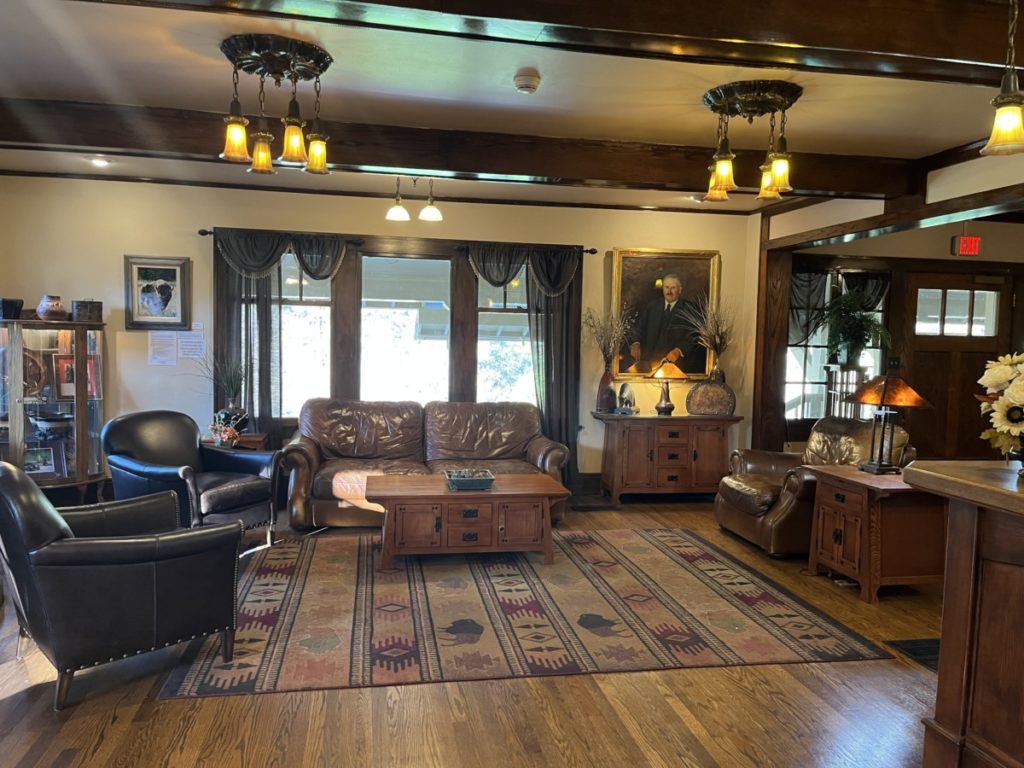
After several additions and wings, the lodge boasts over 100 rooms and cabins today. Although we didn’t stay at the lodge, we did go there for dinner one evening.
Iron Mountain Road
On the way back to Hill City, we drove the Iron Mountain Road. This road, the Needles Highway, and the Wildlife Loop comprise the 70-mile Peter Norbeck Scenic Byway. Peter Norbeck, South Dakota Governor and later US Senator designed this 17-mile road in 1933 to showcase more of the Black Hills with twisty turns, pigtails bridges, and tunnels.
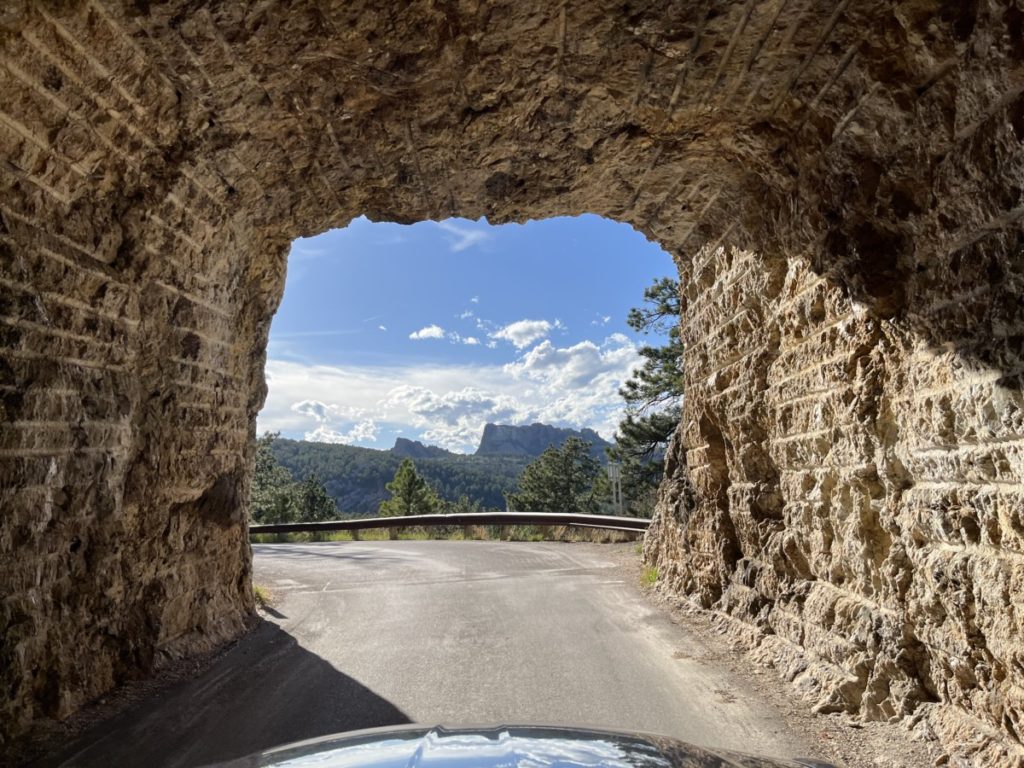
In addition to taking visitors to the peak of Iron Mountain, the Doane Robinson Tunnel affords views of the presidential carvings at Mt. Rushmore. Anyone can drive the road (except when closed during the winter) without having to pay fees to enter Custer State Park.
Conclusion
Custer State Park is a must-see destination when visiting South Dakota. Worthy of national park status, the park offers accommodations at five lodges. While we didn’t have time, the Blue Bell Lodge hosts a chuckwagon dinner.
For more information about Custer State Park, click here.
